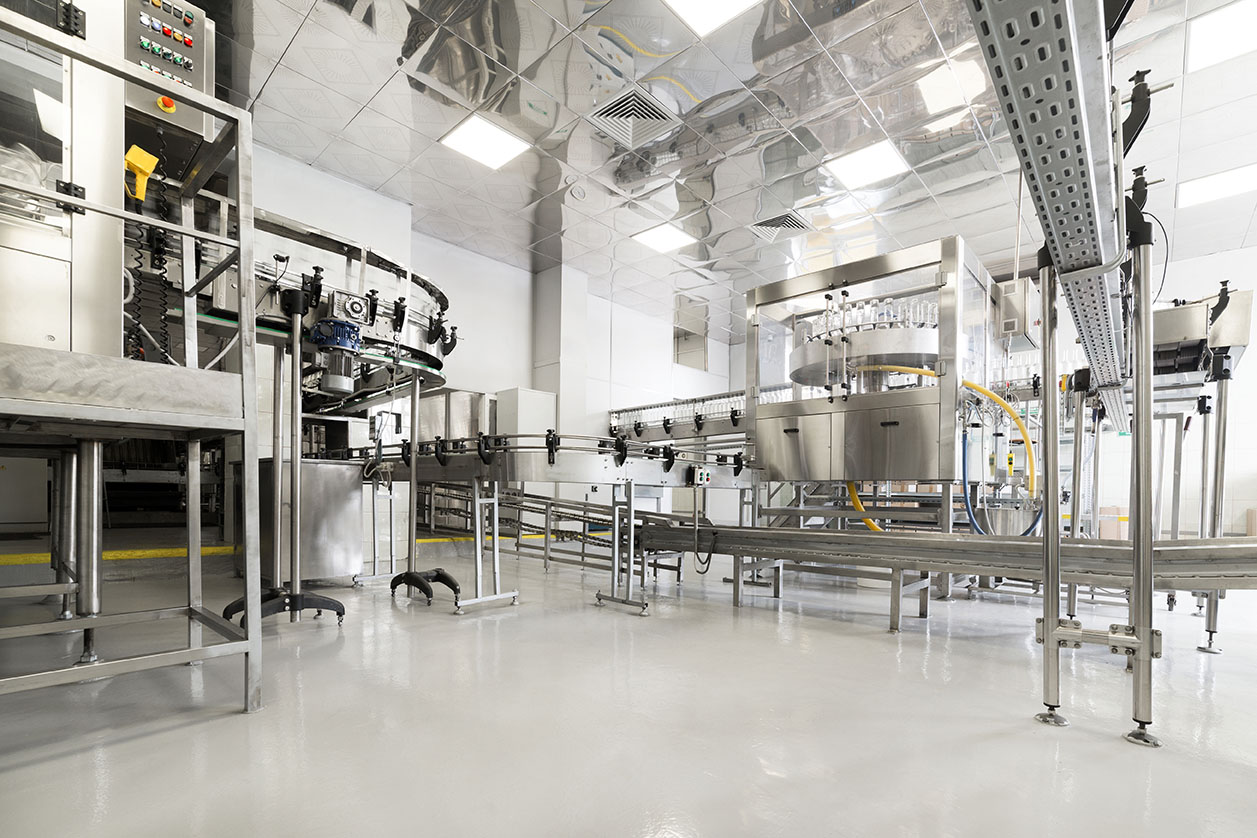This post is the first in a series of eight articles pertaining to safety in the food manufacturing and processing industry.
Food manufacturers must implement and follow proper cleaning and sanitizing procedures to prevent cross-contamination, foodborne illness, and accelerated spoilage. To ensure food quality, manufacturers must monitor and verify the safety of all foods and ingredients that enter the facility, protect food in the facility from unintentional contamination, and prevent the growth of harmful microorganisms in or around food. To accomplish this, all food manufacturing and production facilities should have a written comprehensive food safety plan that covers all of the facility’s food safety procedures, such as scientific testing, temperature and moisture control, storing and handling, cleaning and sanitizing, and even facility security.
How can food cause illness?
The Centers for Disease Control and Prevention (CDC) estimates that 48 million people become sick, 128,000 people are hospitalized, and 3,000 people die in the United States each year due to foodborne illness. Foodborne illness can occur when hazardous substances or foreign objects contaminate food products. For example, if a worker accidentally spills a cleaning solution onto the assembly line while cleaning machinery, any food that touches the assembly line can become contaminated with cleaning solution and cause illness. A more common cause of foodborne illness, however, is the presence of foodborne pathogens in food products. Foodborne pathogens are any microorganisms that can cause illness in humans, including:
- Viruses
- Bacteria
- Mold
- Parasites
These pathogens can rapidly grow and reproduce after they come into contact with a food product. There are more than 250 known pathogens that can be spread through food handling and consumption. These pathogens can be naturally present in the foods—for example, salmonella often grows in chickens’ digestive tracts. They may also be introduced to food during harvesting, transporting, storing, handling, processing, packaging and serving. Food products can be contaminated by contact with contaminating substances and surfaces, exposure to contaminated air, or handling by a sick or unhygienic person.
Cleaning and Sanitizing
Effective cleaning and sanitizing procedures help reduce your facility’s risk of spreading foodborne illness and accidentally distributing contaminated food products. This, in turn, maintains your facility’s public image, prevents costly recalls and lawsuits, and helps keep your workers safe and healthy. Cleaning means removing “soils”—food residue, oils, grease, and dirt—from a surface. Soils can harbor bacteria and other microorganisms and can physically block sanitizing chemicals from reaching the surface. After proper and effective cleaning has been done, your facility should the sanitize surfaces that have been cleaned. Sanitizing reduces the number of hazardous bacteria on a surface to levels that regulators consider safe. Dishes, equipment, work surfaces, and machinery are not properly clean until they have been both cleaned and sanitized.
What should you clean?
All work surfaces, dishes, equipment, machinery, and surrounding environments should be both cleaned and sanitized. This includes floors, walls, drains, belts, and more. It’s important to clean cracks, crevices, and dark places thoroughly, because biofilms can easily form in these locations. Biofilms are coatings made of biological material. When your facility is not cleaned and sanitized properly, microorganisms can clump together and form a film over a surface that is resistant to sanitizing chemicals. To prevent biofilms from spreading pathogens throughout your facility, employees should check for biofilms and clean areas where they may form regularly.
Summary
Proper cleaning and sanitizing procedures maintain your facility’s public image, prevent the spread of foodborne pathogens, and avoid costly recalls. To control foodborne pathogens, such as viruses, mold, bacteria, and parasites, in your facility, you should have a written comprehensive safety plan. All employees must be trained on the difference between cleaning and sanitizing, proper cleaning procedures, and how to prevent biofilms from forming. All surfaces in a facility, including walls and floors, should be cleaned to prevent foodborne contamination.
For more information, click the following links:
- Attribution of Foodborne Illness: Findings
- Burden of Foodborne Illness: Questions and Answers
- Cleaning and Disinfection: Improving Food Safety and Operational Efficiency in Food Processing
- Basic Elements of Equipment Cleaning and Sanitizing in Food Processing and Handling Operations


